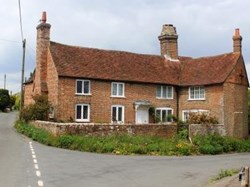About
Ninfield is known to have formed part of the possessions of the Earl of Eu, but since then the names of the chief owners have been omitted, possibly because of the frequent changes in the spelling of the place; Menefled, Nedrefeud, Nemenefeud, Nimesfeld, Nemenefeld, Nemefeld, Nunfield. In 1221the Eus forfeited their English estates and Ninfield passed to the family of Hastings. By 1295 the families of Cherehe and Brun (Brown) were the principal land owners. (Sussex Archaeological Collections)
The village is on the route we believe the Norman’s took from their landing site at Pevensey to the battle ground at Senlac Field in Battle. Local legend has it that William the Conqueror flew his standard at Standard Hill. The village is mentioned in the Domesday book as having been badly damaged by the Conquerors forces in 1066.
Smuggling sometimes known as Owling (where wool or sheep were smuggled out of England) was prevalent in the area due to its proximity to the sea. In times gone by, inlets from the sea extended inland up the valley where Waller’s Haven runs to Boreham Bridge.
Iron workings feature in the history of the area around Ashburnham from pre Roman days through to the 1800s. A plentiful supply of coppiced Sweet Chestnut fuelled the furnaces. Ninfield has a relic of these times, its iron stocks and whipping post which are in the centre of the village, were probably manufactured at Ashburnham in the 1700's.
The village has over 20 listed buildings with St. Mary the Virgin Cof E Church being Grade 1. At one time the areas around The Blacksmiths Inn and Lower Street were two separate hamlets, joined by Church Path.
Famous people with links to the village include Basil Ede a notable bird and wildlife artist, the actress Charity Wakefield, architect Sir Giles Gilbert Scott (designer of Liverpool Anglican Cathedral and the K2 red Telephone Box) and Don Cockell the World Heavyweight Boxing contender.


